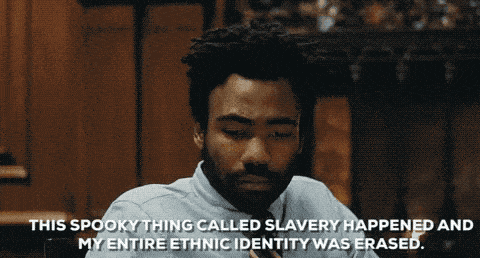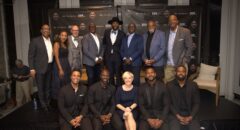 You've probably heard it before. Perhaps from your friends or some random person you met. More often than not, many Black people say that they have "Indian" in their family. So much so that it's become a running joke in the Black community.
You've probably heard it before. Perhaps from your friends or some random person you met. More often than not, many Black people say that they have "Indian" in their family. So much so that it's become a running joke in the Black community.
But some really do believe that they do have a lineage of Native American in their bloodline because of the grade of their hair and/or high cheekbones.
But in looking at the true line of African Americans, the truth is, many do not have "Indian in their family". Here's why:
Those high cheekbones and that straight black hair derive from our high proportion of white ancestors and not, for most of us, at least, from our Cherokee great-great-grandmother on your daddy's side (*sigh*). DNA doesn’t lie (just ask Maury).
But seriously, according to genealogist and scholar, Henry Louis Gates, Jr, a small percentage of African Americans do have significant amounts of Native American ancestry, though almost no black American person today has as much Native American ancestry as they do European ancestry, by quite a long shot. (This does not include black people of Hispanic origin, in that Hispanic Americans tend to have far more Native American ancestry than African Americans do.)
YOU MAY ALSO LIKE: The Best Vitamins For Black Hair
Here are the statistics: Whereas virtually all African Americans have a considerable amount of European ancestry in their genomes, only 19 percent have at least 1 percent Native American ancestry, and only 5 percent of African American people carry more than 2 percent Native American ancestry. How do these percentages translate into ancestry?
Well, if you have 5 percent Native American ancestry in your mix, that means you had one Native American ancestor four to five generations back (120 to 150 years ago).
If you have 2 percent Native American ancestry, you had one such ancestor on your family tree five to nine generations back (150 to 270 years ago). One percent of Native American ancestry means that this ancestor entered your bloodline six to 10 generations back (180 to 300 years ago).

This timeframe, however, presents a problem for explaining Native American ancestry in blacks. By 1715, few Africans had arrived in North America through the slave trade.
In fact, according to the Trans-Atlantic Slave Trade Database, only about 29,800 Africans had disembarked from slave ships by 1714 (half before 1700 and half after)—a very small part of the 388,000 or so Africans who would eventually arrive here and from whom most of us are descended.
The first of three large waves of Africans would surface in this country only after 1714. By 1750, for instance, some 145,970 had arrived. But most of these, as we can see, arrived after 1714.
Therefore, for most of us, the odds of being descended from an African who arrived in North America before 1700 and mated with a Native American, although possible, are very small.
The real major exception in American history to the absence of contact between Native Americans and African Americans is with the so-called Five Civilized Tribes—the Creek, the Choctaw, the Cherokee, the Chickasaw and the Seminole.
They were located in the Southeast, in parts of what are now Mississippi, Alabama, Georgia and Florida, until they were forcibly moved to Indian Territory, which became the state of Oklahoma in 1907, in the dreadful Trail of Tears during the 1830s.
They were known as “civilized,” in part because they owned black slaves.
But even in these tribes, the number of slaves was quite small: According to the 1860 census, four of these tribes (the largest being the Cherokee) owned 7,369 slaves, compared to a total of 3.9 million slaves in the United States that same year.
Nevertheless, black slaves made up about 12.5 percent of the total population in Indian Territory in 1860, a sufficient ratio within a recent enough period to mate rather broadly and leave a significant genetic legacy among African Americans today.
Claudio Saunt stresses that these figures are undercounted, but the total numbers are tiny, even if we double them (404 free black people also were living in Indian Territory that same year).
In other words, if you can trace your ancestry to black ancestors living in what is now Oklahoma between 1840 and 1908, your chances of being among the “genetic 5 percenters” is much higher than for any other African Americans.
And chances are you probably do have a significant amount of Native American ancestry. If you don’t descend from ancestors who lived with these Native American tribes or in Oklahoma, the odds are much greater you have very little Native American ancestry.
Maybe the better question is, why are most Black people not happy just to have "African" in their family?
For more interesting facts, click here.









